Schaum Torte: Everything It’s Cracked Up to Be - No. 220
How a great-grandmother’s Wisconsin recipe becomes a triumphant summer dessert down South
I am thrilled to welcome a guest post from my longtime friend Susan Puckett, with whom I worked at The Atlanta Journal-Constitution many years ago. It seems just like yesterday! Susan’s discovery of an old family recipe reveals not just a new summer dessert but a nostalgic place and the family who came from it. I’d also like to thank Cleveland, Ohio, photographer Beth Segal for the lovely photos. Enjoy! - Anne
By Susan Puckett
I grew up in Mississippi with homemade biscuits, pound cake, and a paternal grandmother called Mawmaw who was raised plucking feathers from the chicken on the farm before frying it. Those Southern icons are woven into my DNA.
My mother Nancy’s side of the family tree, on the other hand, was more of a mystery. Those relatives are scattered around the Northwest where she grew up, and I’ve only met a handful.
My mother’s parents divorced when she was young, and she went to boarding school in California when her mother—my grandmother, Dodie—took a job in New York and became a novelist.
I had almost forgotten that Dodie’s roots were in Wisconsin until I came across a recipe for Nana’s Schaum Torte, a meringue-like cake, in two family cookbooks that my mother had pulled from a dusty box of memorabilia.
Nana was Ruth Seymour Lund Frentz (1888-1983). She was Dodie’s mother and my great-grandmother. She must have been quite a cook. Curious to know more about her, schaum torte seemed the perfect place to start.
How a German-Austrian ‘’meringue cake’’ becomes a page in my culinary story
One family cookbook, Recipes & Remembrances, had been compiled by a cousin named Gay. The second was a small ring-bound notebook of recipes Dodie had beautifully handwritten for my newly married sister. Dodie described the torte as “a very nice and attractive dessert for a ladies’ luncheon,’’ but my cousin Gay said it best when she described how ‘’it emerges from the oven golden and crusty on top, yet soft and marshmallow-y in the center.’’
I pieced together that Nana had acquired the schaum torte recipe from a friend named Vera in the early 1900s, either in Milwaukee, where Dodie and Gay’s mother Altha were born, or in the town of Elkhorn, about 40 miles southwest, where Nana’s family had settled in the early 19th century.
When I plugged “schaum torte” into my browser, the links first to pop up were all Wisconsin websites or blogs by cooks of Wisconsin heritage. Several note upfront that schaum torte (or schaumentorten, meaning “foam cake”) is virtually unknown outside of Wisconsin, and suggest it arrived in Wisconsin with German or Austrian immigrants around 1870.
It belongs to a large family of similar meringue-based desserts, the closest being the pavlova, which may have been created to honor the Russian ballerina Anna Pavlova early in the 20th century after touring Australia and New Zealand. The main difference is the topping. Pavlova features kiwi and other fruits, but shaum torte is primarily — but not exclusively — all about strawberries.
To help me get a sense of schaum torte’s place in Wisconsin culture, I reached out to my longtime food writing colleague, Nancy Stohs, who recently retired as food editor of The Milwaukee Journal-Sentinel.
She confirmed that schaum torte is still very much a Wisconsin thing. Even though she was born in Kansas and raised in Nebraska in a family with German heritage. ‘’I had never heard of it until I moved to Milwaukee and started writing for the paper.’’
It’s especially popular when strawberries are at their peak, and it appears at strawberry festivals and summer church events, Nancy Stohs said. She sometimes scales the quantity down to two individual portions for her husband and herself and uses a piping bag to form her meringues, but most home versions aren’t so fancy and pile the meringue into springform pans or Pyrex dishes or just drop it from a spoon onto cookie sheets and then bake.
As an interesting aside, schaum torte is often on the menu at traditional German restaurants and served at something called ‘’supper clubs.’’
Supper clubs feature heirloom Wisconsin favorites such as fried walleye, prime rib, old-school relish trays, and hand-muddled brandy old fashioneds. (Several books, most notably Mary Bergin’s Wisconsin Supper Club Cookbook, have been written about them, and the Wisconsin Supper Clubs website provides a list of more than 250 supper clubs throughout the state. I’m imagining a future culinary vacation built around those already…)
Making Schaum Torte
I pulled out Nana’s recipe for schaum torte and baked it for a Mother’s Day brunch on my patio. The giant slab of meringue covered in whipped cream and fresh strawberries turned out just as ethereal as I’d imagined: crispy, creamy, fruity, decadent, and showstopping-gorgeous all at once.
I was so pleased with my achievement I took a snapshot of the finished dish and forwarded Dodie’s original recipe to my friend Beth Segal in Cleveland, with whom I’ve been regularly swapping recipes since we were in our 20s. I thought she’d get a kick out of Dodie’s immaculate cursive and antiquated instructions (“15 minutes by hand with a rotary beater as Vera did it, but less of course with an electric mixer — however, don’t hurry it.”)
Even with the vague and outdated wording, and being rusty on my meringue-making skills, I’d managed to pull it off. Beth noted that the recipe bore a striking resemblance to one in her Jewish father-in-law’s homemade cookbook simply called “meringue,” a family favorite around Passover.
But to her horror — and mine — her attempt to reproduce it for a Memorial Day gathering didn’t work out as planned.
“My meringue cracked down the middle and collapsed!” she texted. “What did I do wrong?”
Mortified, I did some more research and called her. We went through the possibilities: eggs too cold, eggs too old, sugar added too quickly, whites beaten too fast. The most plausible reason, though, we concluded, was that the meringue had cooled too quickly.
That would explain why so many of the recipes for meringue-based desserts I had studied in advance advised turning off the oven after baking and allowing them to cool in the oven before removing. Dodie hadn’t called for this step, and I figured it was probably unnecessary. But I decided to leave it in the turned-off oven for an hour just in case. And sure enough, it emerged smooth and fissure-free.
Beth decided to give it another go, this time adding a pinch of cream of tartar for extra stability, and giving it a full night’s rest in the cold oven before allowing it to see the light.
The next evening, she sent me a jubilant text with a magazine-worthy photo attached. “Success!!!’’
Was it the cream of tartar that did the trick? Or was it the cold oven, the temperature of the eggs, or the reduced speed of the mixer?
I reread my cousin Gay’s version of Nana’s Schaum Torte and noticed a detail in the description I had previously overlooked. After cooling, she writes, “the top cracks beautifully and collapses a bit, creating a lovely hollow to fill with piles of fresh berries and whipped cream.”
Maybe secrets are hidden in family recipes and we just don’t see them until we give the recipes a closer look.
Or maybe Beth had it right the first time. The beauty of a schaum torte is once it’s covered in piles of whipped cream and berries — and perhaps even a side of ice cream as they typically do in Wisconsin—no one can tell the difference and if they can, they certainly won’t care once they dig in!
Schaum torte is the triumphant—and forgiving—dessert of summer, cracks and all.
Thank you, Susan and Beth!
Susan Puckett is a James Beard nominated food writer and cookbook author based in Decatur, Georgia. She collaborates with others on their cookbooks. Check out her website here.
Beth Segal is a studio photographer and freelance writer based in Cleveland, Ohio. Check out her website here.
Coming Thursday for paid subscribers, the perfect cheese biscuits to bake for summer get-togethers.
- xo, Anne
Do you know Schaum Torte?
THE RECIPE:
Nana’s Schaum Torte
My version of schaum torte adheres closely to my family’s, but after testing and with help from my friend and photographer Beth Segal, I’ve added a few tweaks and clarifications to ensure success. Neither my cousin nor grandmother call for letting it cool in the oven, as many recipes do, on the assumption this helps keep the meringue’s structure intact. Rather, Cousin Gay suggests that the cracking and collapsing is a natural part of the process, creating a “lovely hollow” to fill with whipped cream and berries. To avoid unnecessary alarm, I’m going with the majority on that point and letting it cool in the oven, so I can form that hollow with a spoon to my liking. Another tip: Don’t beat the egg whites at too high of a speed from the onset. You need to incorporate all the sugar before you get to stiff peaks. Start whipping on low speed until foamy, increase to medium while adding the sugar until there are soft peaks, and then finish on high until stiff peaks form.
Serves 6 to 8
Vegetable oil spray and parchment paper
6 large egg whites, at room temperature
½ teaspoon salt
½ teaspoon cider or white wine vinegar (or red wine or balsamic vinegar for a pink tint)
¼ teaspoon cream of tartar (added for extra stability, but not absolutely essential)
2 cups plus 3 tablespoons granulated sugar
2 teaspoons vanilla, divided
1 pint (2 cups) heavy whipping cream
1 pint fresh strawberries, trimmed, hulled, and quartered (or berries or fresh fruit of choice)
Vanilla ice cream (optional)
1. Preheat the oven to 275ºF. Spray a 9-by-13-inch Pyrex baking dish or a cookie sheet with vegetable oil spray, line with parchment paper (leaving a few inches of overhang on each end for lifting), and lightly spray the paper.
2. In a large bowl of an electric mixer, beat the egg whites on low speed until foamy. Add the salt, vinegar, and cream of tartar, and 1 teaspoon of the vanilla and blend. Increase the speed to medium, and begin to very gradually add 2 cups of the sugar, 1 tablespoon at a time, beating until soft peaks begin to form. Increase the mixer speed to high and beat until stiff peaks form.
3. Transfer the mixture into the prepared baking dish and spread to the sides to form a shell. Or, shape either one large or 6 to 8 individual meringues on the prepared cookie sheet.
4. Bake 1 hour, turn off the oven, and leave the meringue in the oven for at least 30 minutes, or up to overnight.
5. Remove the meringue from the oven and allow it to cool completely. Whip the cream with 1 tablespoon sugar and the remaining 1 teaspoon vanilla to nearly stiff peaks. Place the berries in a bowl and sprinkle with the remaining 2 tablespoons of the sugar; stir and set aside to allow juices to form at least 30 minutes before serving.
6. To serve, lift the meringue out of the baking dish, peel off the paper if desired, and transfer to a serving platter or a cutting board. The top may crack naturally and deflate a bit. If not, press the center with the back of a spoon and fill the cavity with whipped cream and then berries.
7. Cut into squares, or for a more casual affair, set in the center of the table and invite guests to dig in using a large serving spoon. Serve with ice cream on the side in true Wisconsin fashion if you can handle that much decadence!

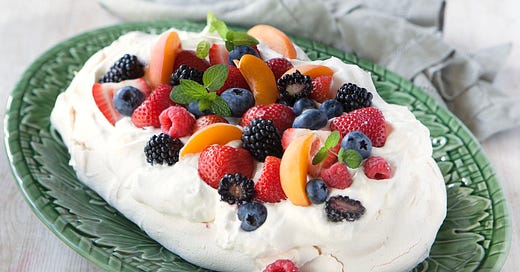



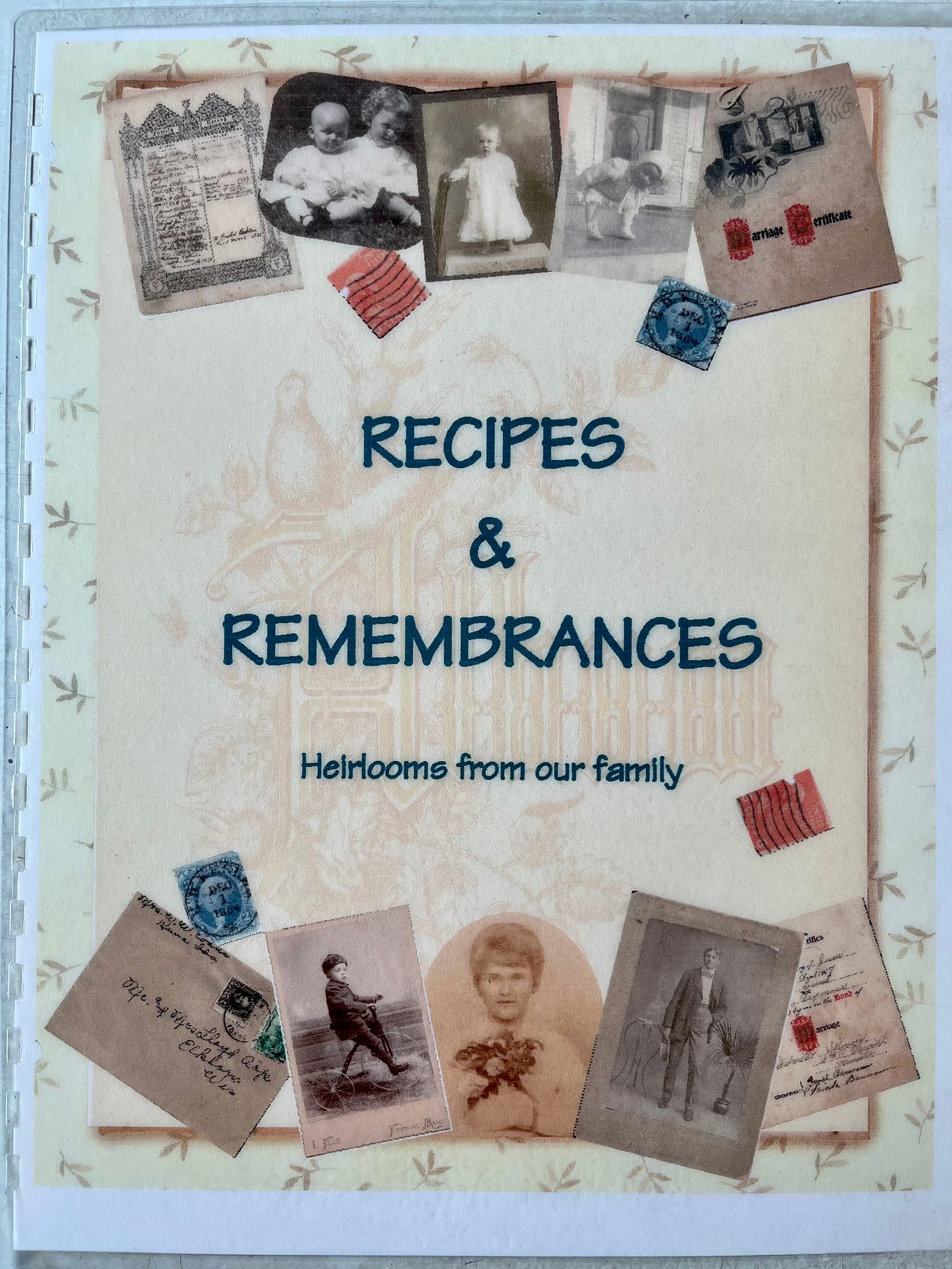
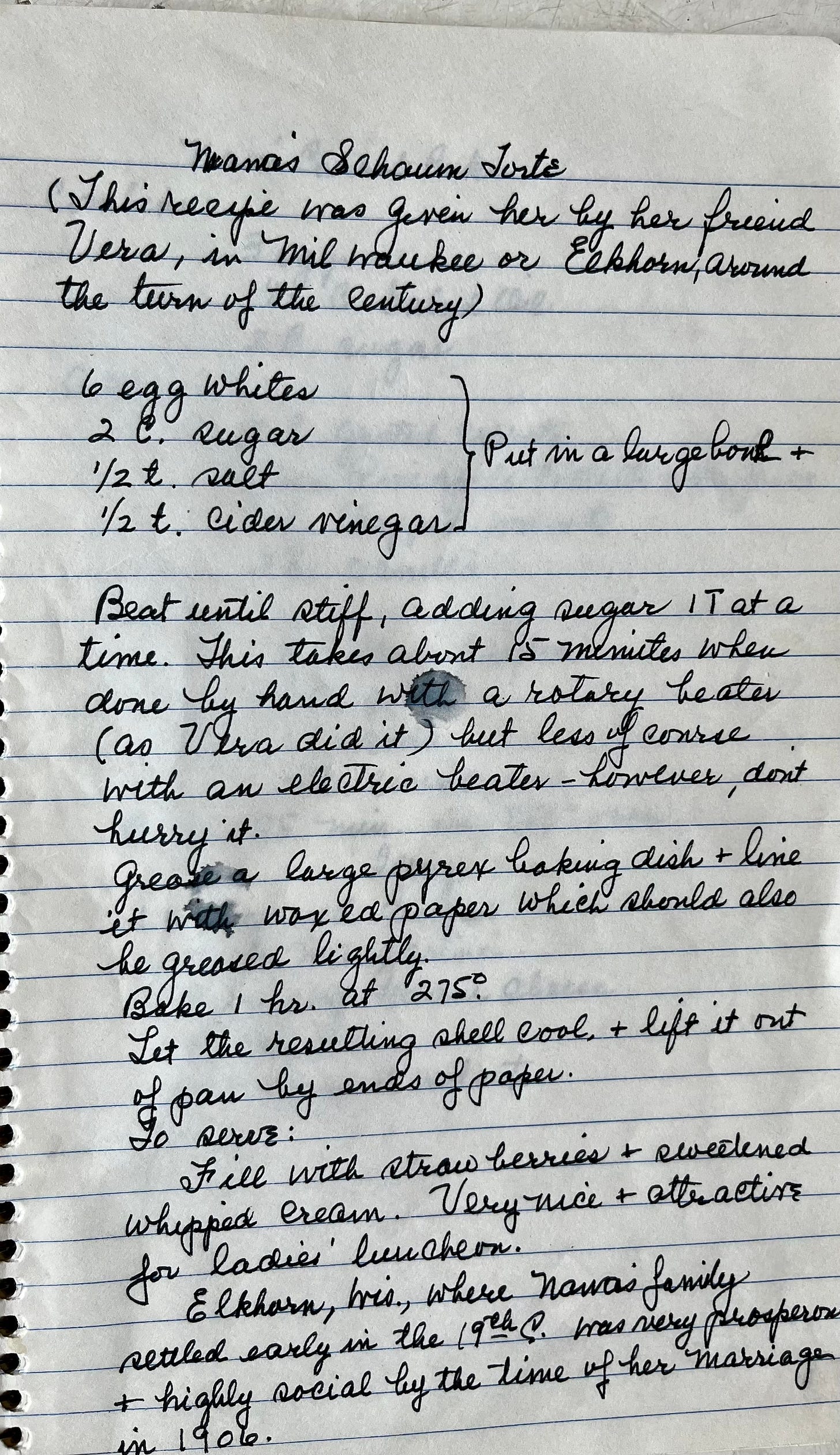
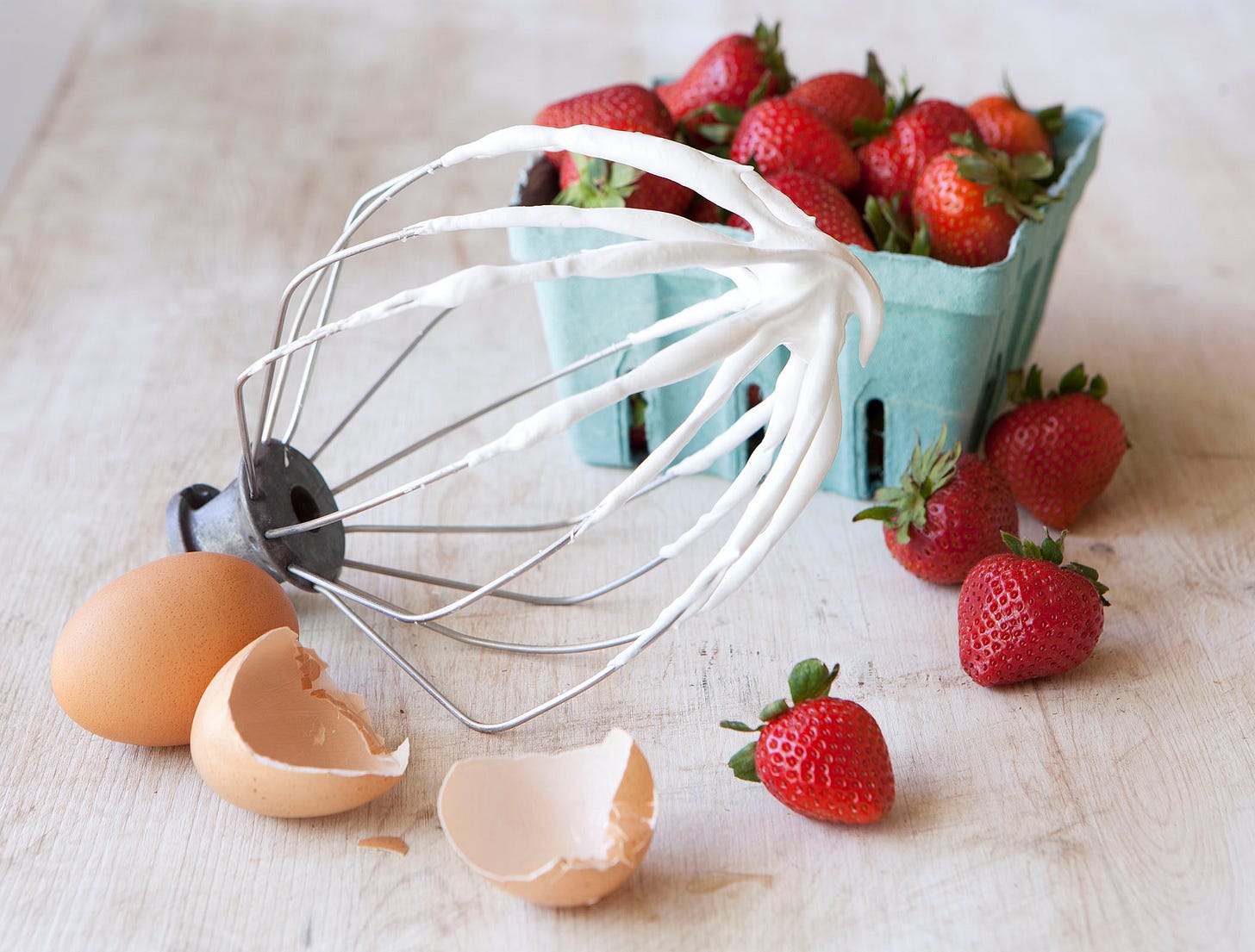
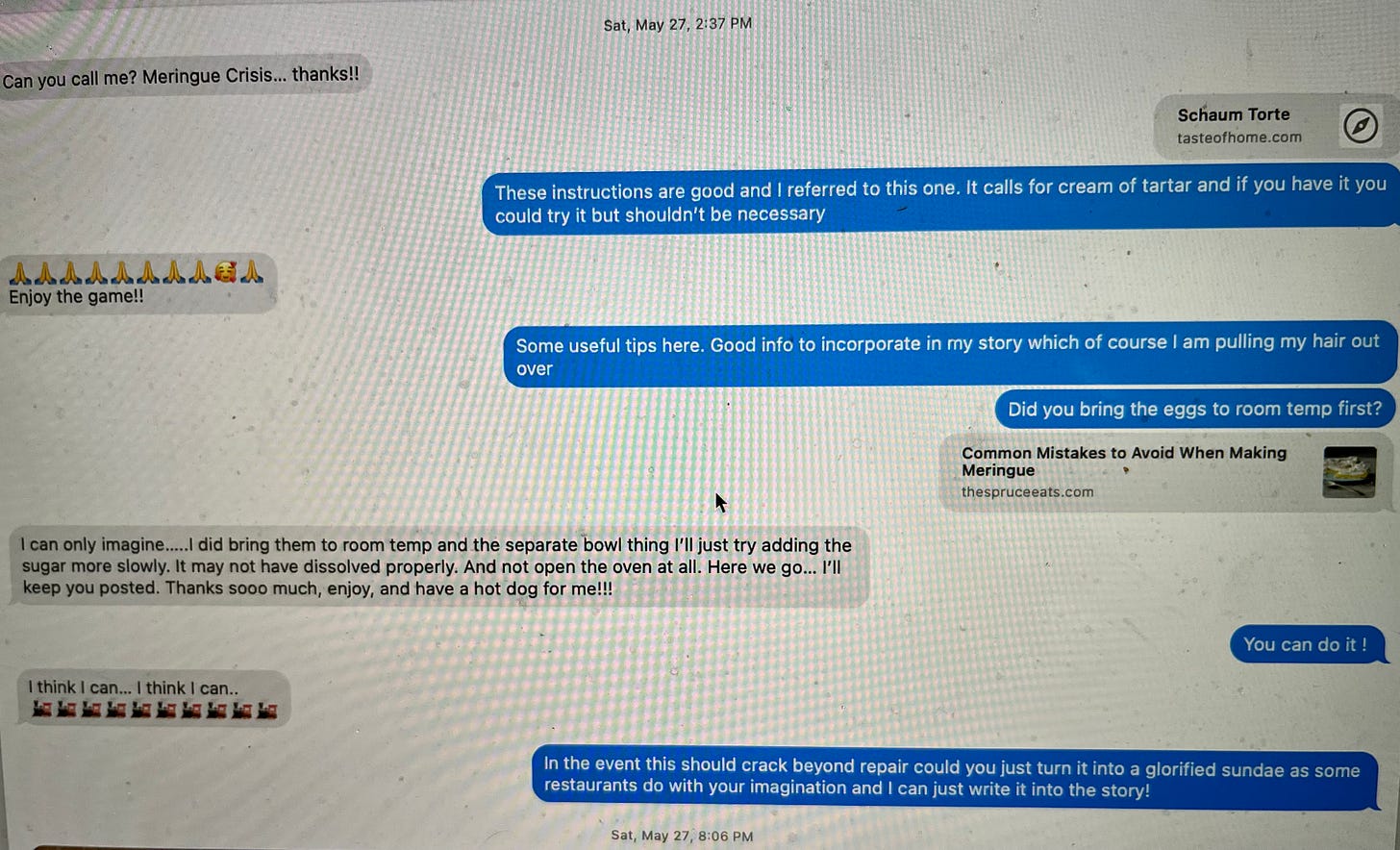
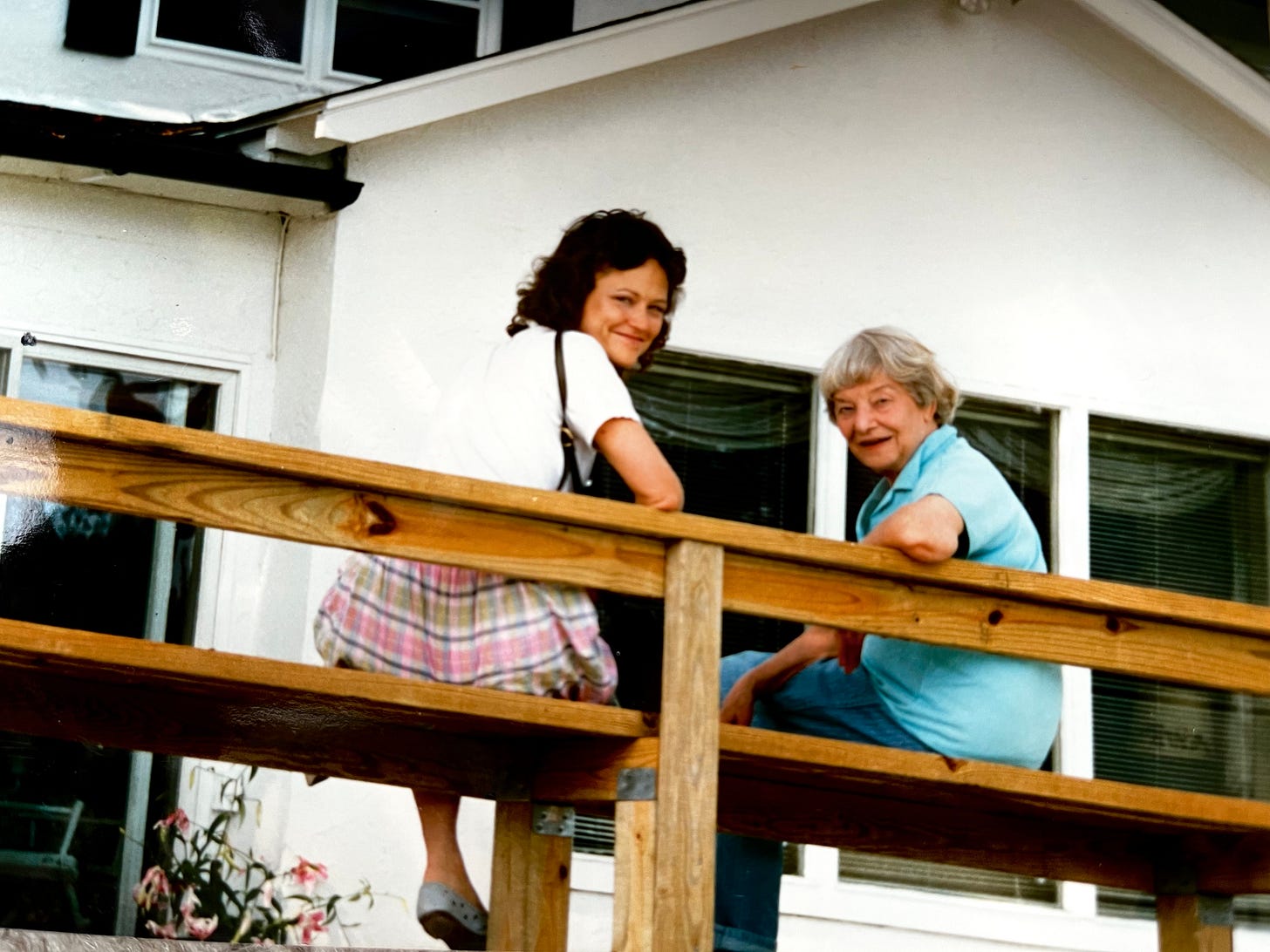
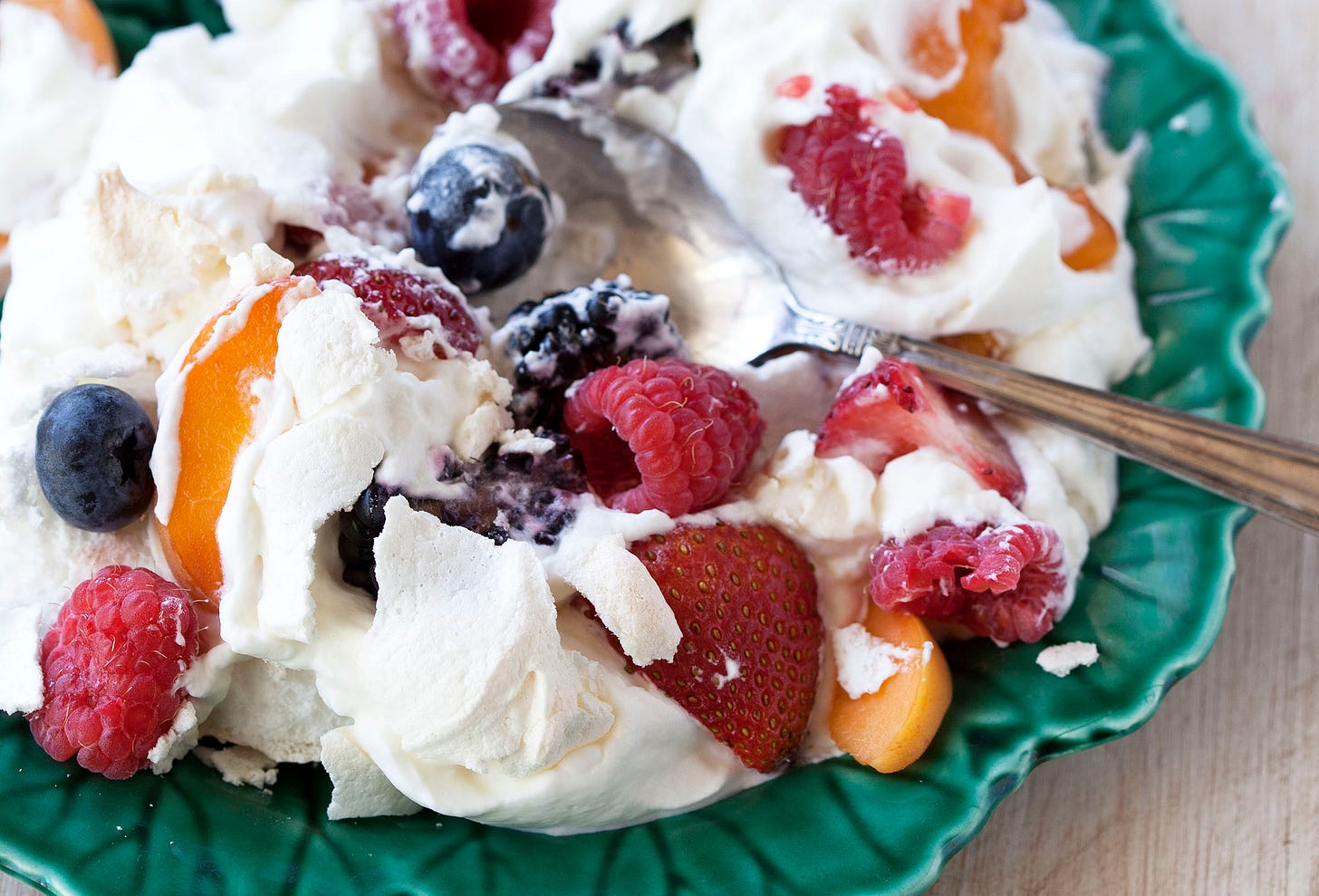
I love that handwritten recipe, especially the last paragraph. Rich with history!
A summer staple in rural Wisconsin on our farm once the strawberries arrived - a delicate cloud with a small scoop of vanilla ice cream topped with fresh strawberries was sublime. Mary Bergin lived a mile away and was our babysitter!